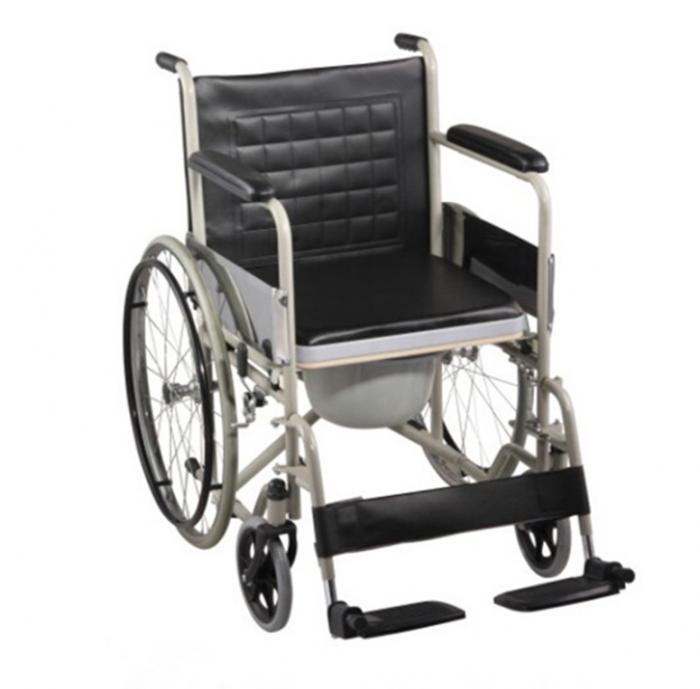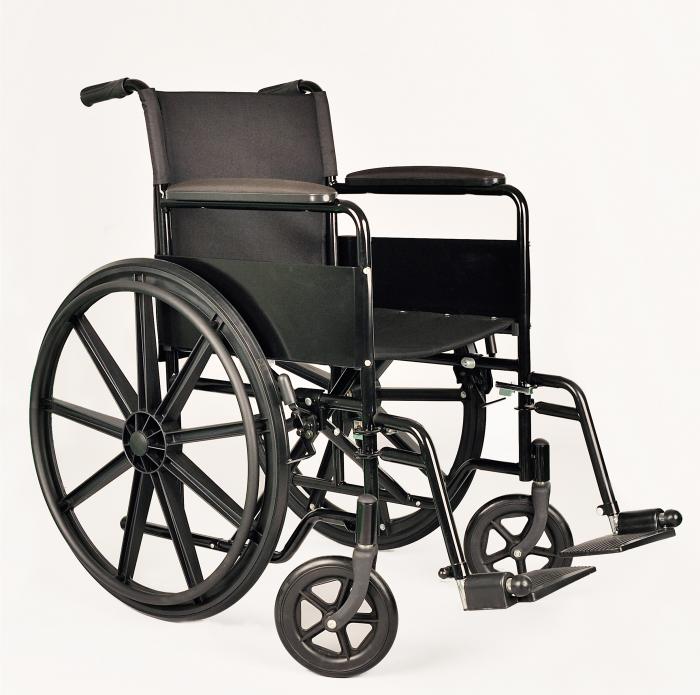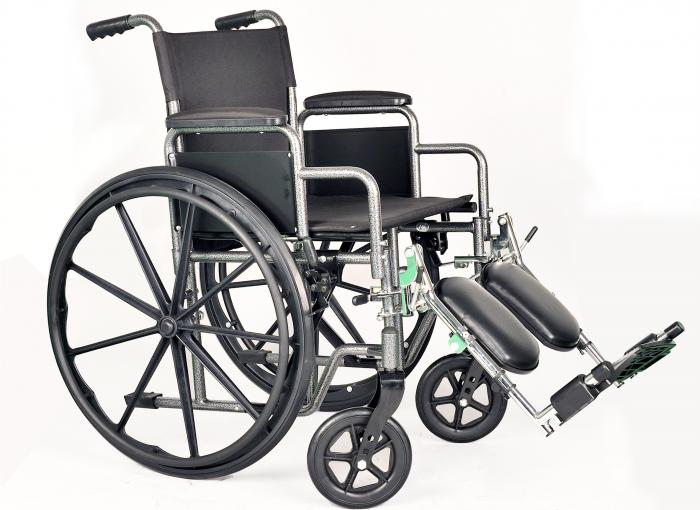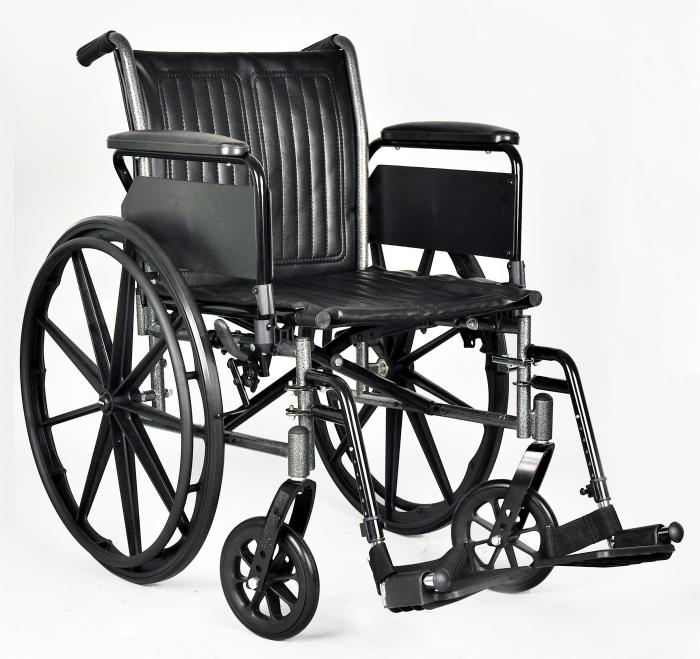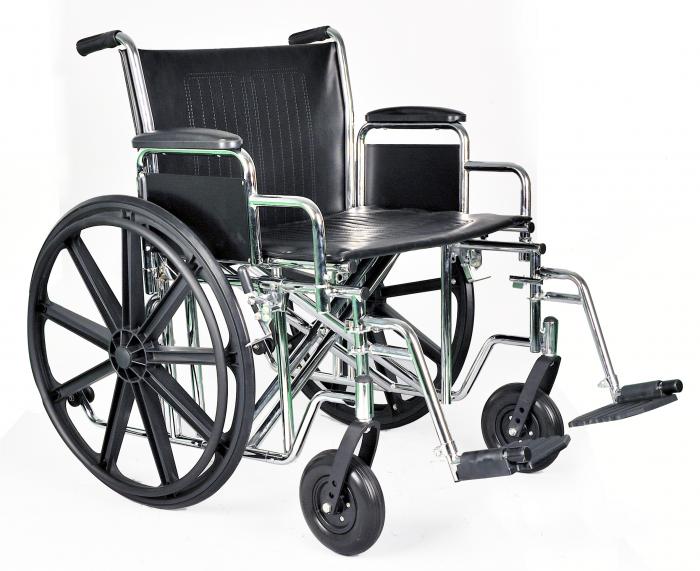| Name: | Economy Commode Chair |
|---|---|
| Model No.: | BES-WL033 |
| Product Name: | Economy Commode Chair |
| Brand: | BESCO |
| MOQ: | 100 units |
| Keywords: | Economy Commode Chairs,Economy Transport Shower/Commode Chairs |
| Sample: | Available |
| Lead time: | 25 days |
| Payment Term: | T/T in advance |
| Country of Original: | China |
| Weight Capacity: | 100 kgs |
| Stock: | Available |
| Port: | Qingdao |
| Office: | Zhengzhou,China |
Products Description
Features:
Fixed armrest and DETACHABLE footrest
Solid Rubber Tire (ABS rear wheel )
Chassis above Ground:Powder steel tube
H-Wheel:Powder steel tube
Hand wheel:Powder steel tube
Armrest:PVC
Front Wheel:8" Solid Rubber Tire
Back Wheel:24" Solid Rubber Tire
Cushion:PVC,Black or Dark blue
Optional toilet attachment
Foot Pedal:Aluminum
Guard Board:Stainless
Handle Grove:PVC
Overall height:880
Overall width:630
Seat width:460mm 18inch
Backrest height:420
Hand rim diameter:502mm
Carton dimension:770 x 280 x 900mm
Weight capacity:100kg
Net weight:21kg/Gross weight:23kg
| Model No. | Seat width | Load capacity | N.W | G.W | Dimension | Packing |
| BES-WL033 | 46cm | 100kg | 21 | 23 | 77*28*90 | 1pc/cn |
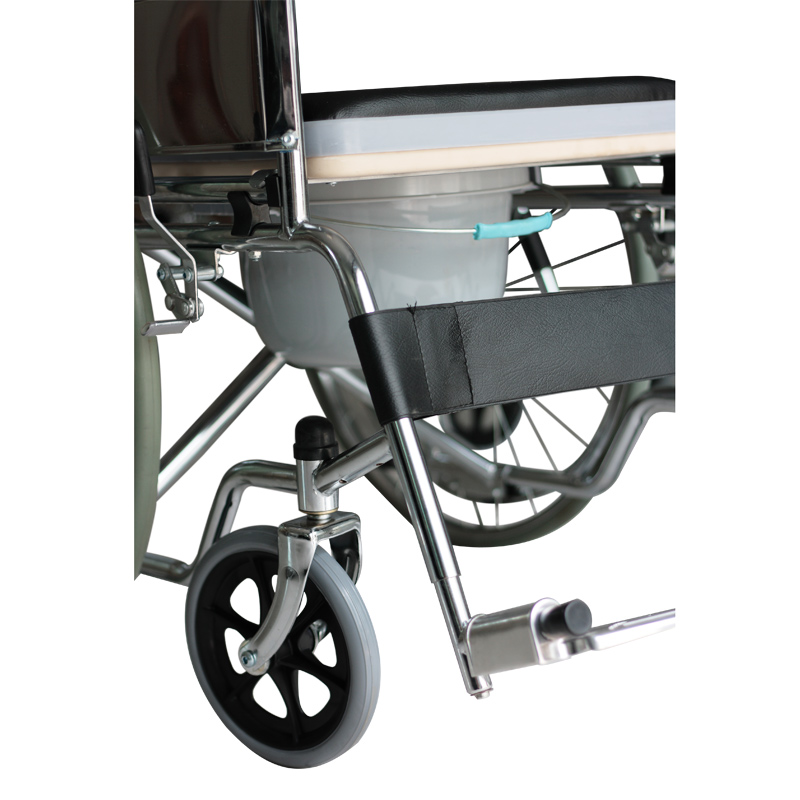
An Economy Commode Wheelchair is an affordable, multi-functional mobility aid that serves as a wheelchair and a portable toilet for individuals with mobility impairments, allowing for easier toileting and bathing while providing independent transportation within the home or facility.
Key Features and Uses
Mobility and Toileting:
It features wheels with brakes, allowing users to be easily transported to a bathroom or shower, and a commode bucket that slides out from underneath for toileting.
Comfort and Support:
Many models include a padded seat and backrest for comfort during use.
Portability:
Some models are foldable, making them convenient for travel or for storing when not in use.
Hygiene:
They typically feature a removable commode pail for easy cleaning and hygiene, often with a lid and handle for safe carrying.
Versatility:
The "Economy Commode Wheelchair" is a catch-all term for a broad category of devices that can serve as a shower chair, a bedside commode, or a wheelchair, depending on the specific needs of the user.
For Whom Is It For?
The Elderly:
Provides a comfortable and safe solution for daily toileting and bathing needs.
Individuals with Disabilities:
Offers independence by providing essential mobility and toileting support without requiring frequent transfers to traditional facilities.
Patients in Rehabilitation:
Facilitates rehabilitation by increasing mobility, strength, and ease of daily tasks.
Caregivers:
Eases the physical burden on caregivers by reducing the number of transfers needed for daily tasks.
Considerations When Choosing
Functionality:
Decide if you need all the features of a shower chair, a commode, or a wheelchair, or if you need a device that serves all three purposes.
Portability:
Consider if a foldable design is important for travel or storage.
Comfort:
Look for features like a padded seat and backrest, especially if the user will be sitting in the chair for extended periods.
Maintenance:
Check if the commode pail and other components are easy to remove, clean, and reassemble.
Using an Economy Commode Wheelchair requires ensuring safety during transfers, proper use for toileting, and regular cleaning for hygiene. This versatile device can be used as a bedside commode, over a standard toilet, or as a transport chair.
Preparing the commode and the area
Set up the location. Position the commode on a flat, stable, and clear surface near the bed or inside the bathroom. For stability, place it against a wall or large piece of furniture.
Lock the wheels. Engage the brakes on all four swivel casters to prevent the chair from moving while transferring.
Prepare for use. If using the chair as a bedside commode, place a commode liner and/or a few inches of water in the pail to make cleanup easier. Ensure you have all necessary supplies nearby, such as toilet paper and wipes.
Adjust height. If the chair has adjustable legs, set it to a comfortable and safe height, ensuring the user's feet can rest flat on the floor.
Transferring to the commode
There are a few ways to transfer safely depending on the user's mobility.
For independent users
Position the chair so it's easily accessible and the brakes are locked.
Use the armrests to push up from the bed or a regular chair.
Back up slowly until the backs of your legs touch the commode seat.
Reach back for both armrests and slowly lower yourself onto the seat.
For caregiver-assisted users
Remove the wheelchair's footrests to provide space for the transfer.
Lock the brakes on both the commode wheelchair and the user's personal wheelchair, if applicable.
Use a gait belt for a secure grip during the transfer.
Stand in front of the user and use proper lifting technique, keeping your back straight and your knees bent.
Pivot together slowly until the user is in front of the commode.
Lower the user gently onto the seat, ensuring they can reach the armrests for support.
Help the user adjust their clothing as needed.
Using the commode
As a bedside commode: The user can urinate or have a bowel movement into the pail. After use, provide privacy and ensure they are properly cleaned.
Over a regular toilet: The chair can be wheeled directly over a standard toilet. Simply remove the commode pail first, and make sure the chair is locked in place.
For transport and bathing: Many commode wheelchairs are also suitable for use in the shower. Check your specific model to confirm.
Emptying and cleaning the commode
Don gloves. Put on disposable gloves before handling waste.
Dispose of waste. If a liner was used, tie it and dispose of it responsibly. If not, carry the pail to the toilet and empty the contents.
Clean the pail. Rinse the pail with water and clean it with a brush, mild soap, and disinfectant.
Wipe down the chair. Use a mild soap and water solution and/or disinfectant wipes to clean the frame, armrests, and seat after each use.
Dry completely. Ensure all parts are completely dry before the next use to prevent the growth of mold or bacteria.
Important safety reminders
Check the weight capacity of the commode before use.
Never leave a person unattended on the commode if they are a fall risk.
Inspect the chair regularly for any loose parts, cracks, or damage.
Follow the manufacturer's specific instructions for assembly, adjustments, and weight limits
